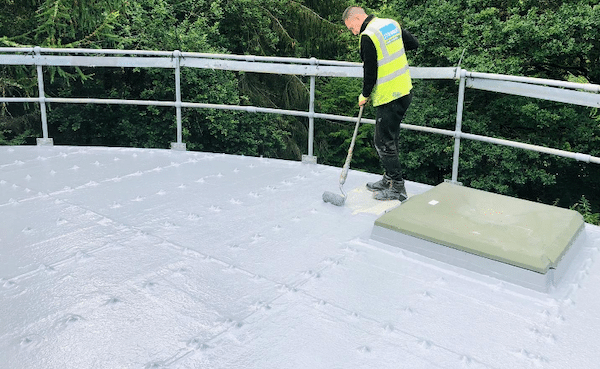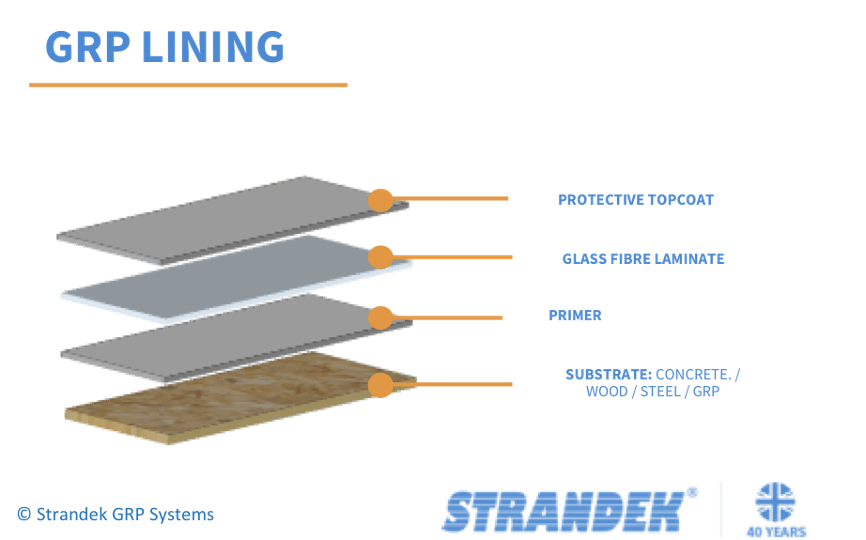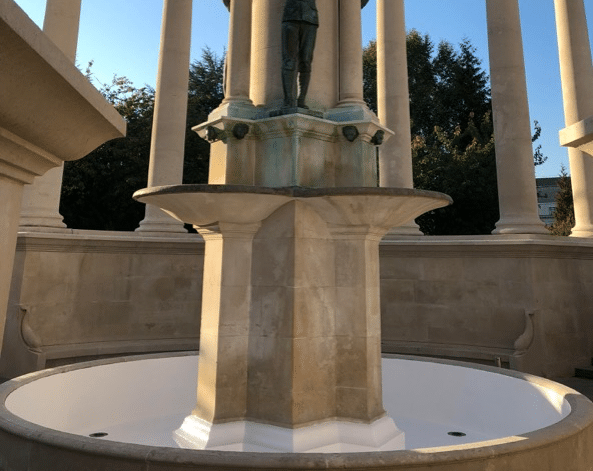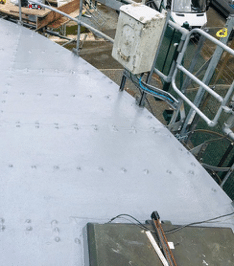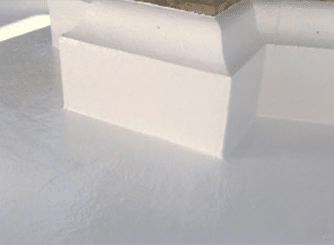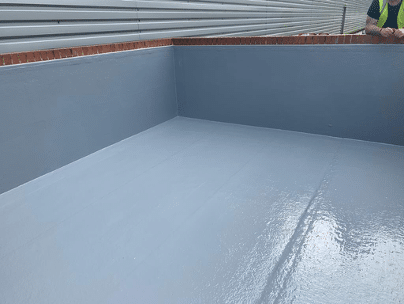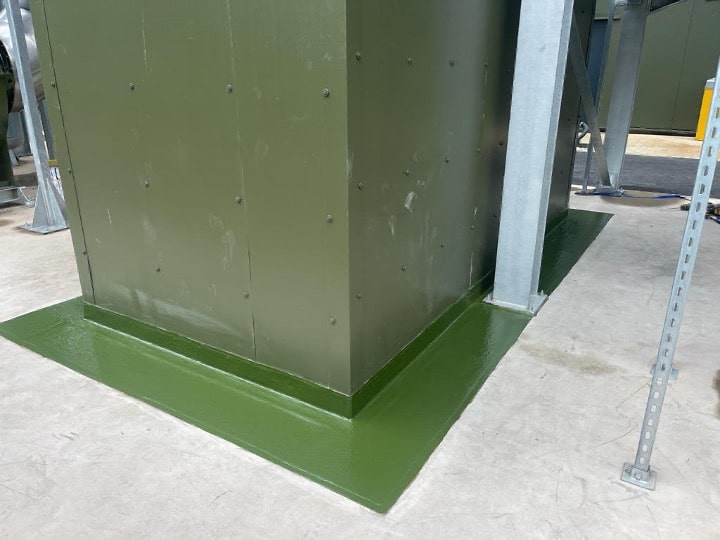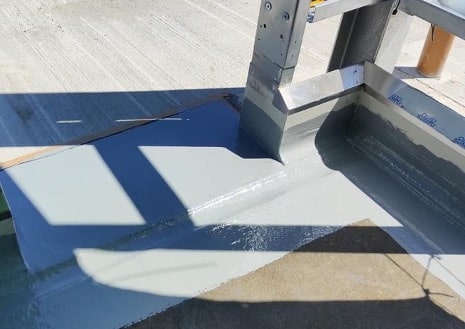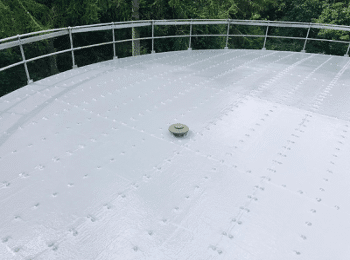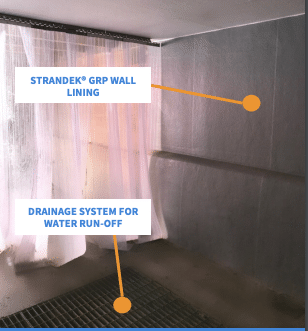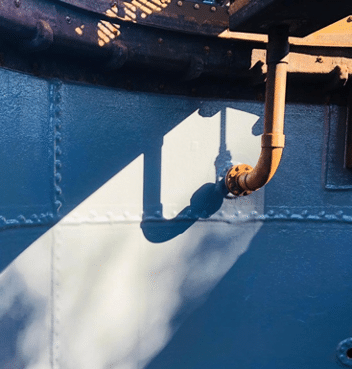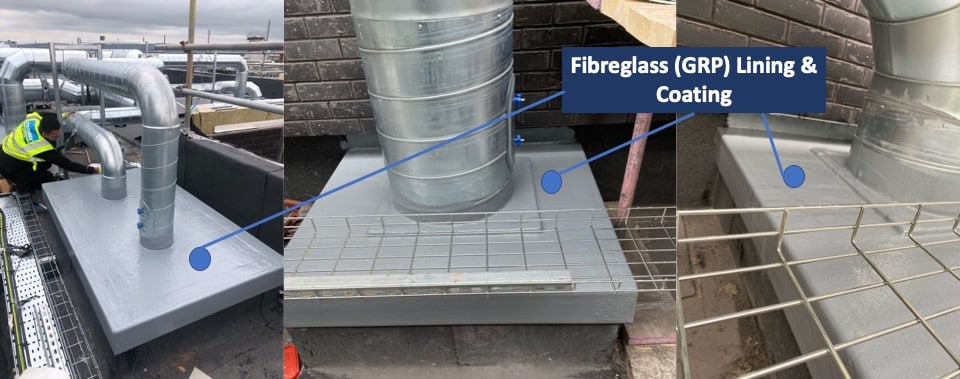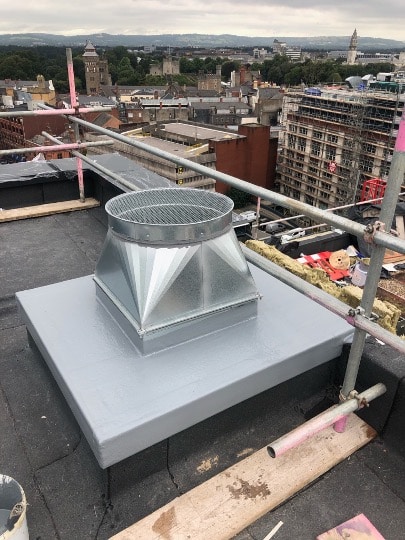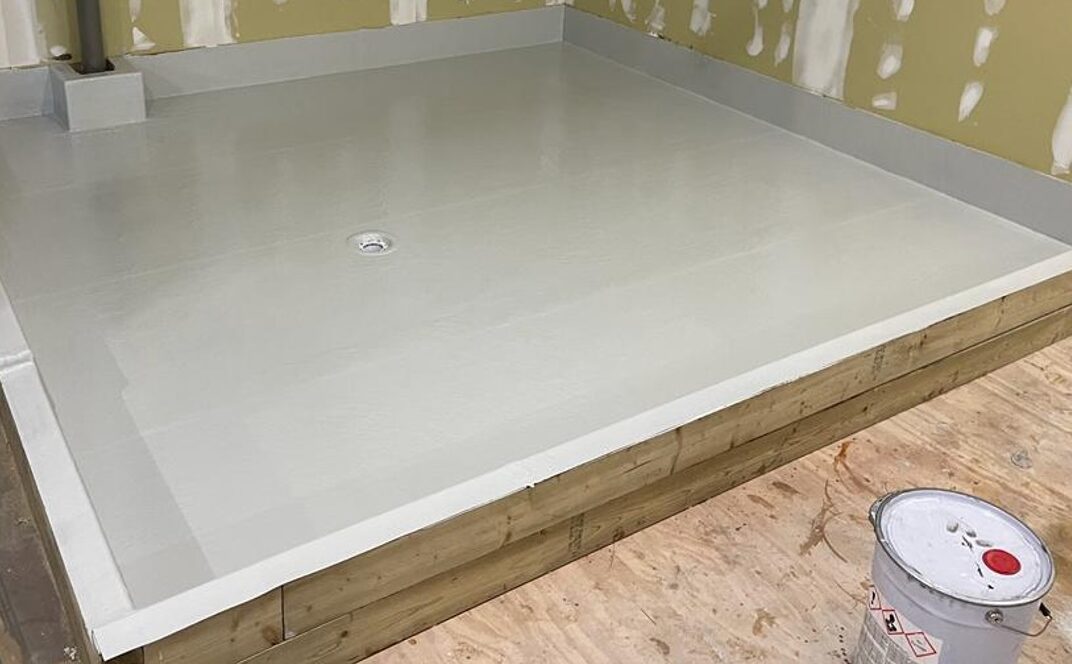What types of Fibreglass (GRP) coatings & linings do you specialise in?
Our expertise centres on vinyl ester or polyester resin variants combined with application-specific glass fibre matting. Using best-in-class hand lay-up methods, we offer linings, coatings, encapsulations and mouldings for a variety of surfaces, structures and in bespoke sizes. There are many videos of our work, from GRP bund linings to balconies and walkways.
Is Fibreglass (GRP) Better than EPDM?
In terms of overall waterproofing performance, durability, and robustness, yes. GRP is stronger, longer-lasting and proven across industries and sectors. Even NASA uses fibreglass for lightweight reinforcement.
Fibreglass linings are superior to a vinyl liner or an EPDM liner. The latter two are generally grey/black and quite soft and prone to puncturing, unlike fibreglass, which has a high Barcol hardness. Furthermore, fibreglass can be installed in any colour (full RAL and BS options are available) and with almost any surface finish (smooth or textured). Indeed, the textured finish can be made by adding grit into the outer layer of resin – making it safer for foot traffic.
How much does a fibreglass (GRP) lining or coating cost?
Costs should account for the surface area, workmanship costs as well as material costs. If surface preparation is needed to remove waste like asbestos that should also be factored in. You can estimate the cost of a GRP lining on using the calculators on our site.
How is a fibreglass (GRP) lining or coating installed?
Following a survey and suitability review, the surface (e.g., concrete) is dehydrated and loose fragments removed. It is then scaled back using an abrasive technique to create surface amenable to adhesion. A thin layer of resin primer is then applied to the surface – this is designed to maximise adhesion between the fibreglass laminate and the underlying substrate. Thereafter, the reinforcement phase is saturated in resin (matrix phase) to form the composite structure via a laminating technique.
Note: the ‘reinforcement phase’ is typically glass fibre for ponds and water features, where polyester resin is used for the ‘matrix phase’. For chemical containment projects (e.g. bund linings or chemical storage vessels), the ‘matrix phase’ is typically vinyl ester and the ‘reinforcement phase’ is typically C-glass fibre.
In both scenarios, the resin is catalysed and then applied to the matting in a specified amount over the primer-coated surface. A roller is used to saturate the matting in resin. This is consolidated with a paddle roller which drives out entrapped air to ensure a consistent laminate thickness – a trait that is instrumental in the mechanical properties of any composite.
Note: in some cases, a ‘surface tissue’ resin enriched layer will be added to the application before it has hardened (cured). This is usually seen on ponds and water features.
Thereafter, a thin layer of flowcoat (topcoat) is applied to give a seamless, aesthetic finish whilst adding abrasion resistance and additional protection to the laminate. The curing process typically takes about 24 hours.
Videos on GRP linings are published on our channel.
What types of surfaces can you apply fibreglass to?
Fibreglass composites can be used to repair and refurbish concrete, wood (timber, plywood), existing fibreglass and certain metals like steel. Indeed, fibreglass composites are often used to repair and reinforce concrete. Some surfaces require preparation in advance to maximise adhesion, minimise moisture contamination and to eliminate ingress. A primer is also used to improve adhesion. Following an assessment and survey, repairs to concrete and other cracked surfaces can also be made using fibreglass
What is the difference between GRP and fibreglass?
The term ‘fibreglass‘ is largely synonymous with ‘GRP‘ – short for glass reinforced polymer. Both are composites built from glass fibre and either polyester resin or a vinyl ester varient. If the fibre of composite is glass, it is termed GRP (Glass reinforced polymer). The term ‘fibreglass’ covers composites that may use other reinforcement, like kevlar, but to chemical containment applications the use of C-glass fibre is instead used.
Where can I learn more about fibreglass (GRP) composites?
Composites UK provides a list of composite training courses to help students learn more about fibreglass and other laminates. The Dennison Advanced Materials Centre offers training courses on composites like fibreglass and carbon fibre.
Who are the leading institutes and leading experts in fibreglass composites?
A range of national and international institutes specialise in composites like fibreglass and carbon fibre. These include Bristol University Composite Institute (ACCIS) and centres for excellence like the National Composites Centre. There is also a range of leading composites experts located in academia.
Where can fibreglass be used as a protective coating?
Fibreglass can be applied to a wide variety of structures designed to contain or repel liquids. Many of these are subject to government regulations when stored in large quantities – particularly for hazardous substances, such as fuel oil in agricultural settings,
Industrial & Commercial
Industrial projects often deal with bulk quantities of potentially hazardous chemicals like certain acids, fuels and oils, wastewater and food and drink manufacturing ingredients like vegetable oil and sodium hydroxide. The volume of these necessitates their own storage unit and storage containment system – along with gullies to process the liquid flow. Such storage systems are usually made from concrete and its porous nature requires an effective coating for long-term protection.
Domestic
Domestic projects may seek a swimming pool lining and similarly may require one to provide a waterproofing fish pond or water feature. Here, fibreglass can be applied to create a seamless and durable barrier to provide extensive waterproofing.
A key benefit of fibreglass is that it is a near one-size-fits-all system for surface and substrate protection. And furthermore, its composition can be adjusted to account for specific chemicals; the system itself is installed in situ. For instance, C-glass reinforcement and a vinyl ester resin can be switched with standard E-glass and polyester resin for enhanced chemical protection.
What are the benefits of using fibreglass (GRP)?
- Fast installation times
- Excellent mechanical properties
- Highly economical to implement as a bund lining system
- Capacity to be repaired
- Flexible and able to accommodate structural changes in the base substrate
- Fire resistant: option to incorporate flame retardant ingredients
- Broad chemical resistance – a variety of chemicals
How does a fibreglass lining system work?
- The term ‘lining’ fundamentally means a form of protective coating.
- In the world of fibreglass laminating this usually applies to items that require protection from impact damage or liquid penetration (typically chemical attack or water ingress). The surface that the lining is intended to protect will dictate the design features of the fibreglass laminate.
- Most ‘impact protection‘ linings will be formed using multiple layers of laminate for added reinforcement. The majority of ‘liquid protection’ linings (excluding purpose-made storage tanks) will be constructed from a single layer laminate and will include the use of chemical-resistant resins depending on the chemical to be contained. The formation of a basic ‘liquid protection’ laminate lining involves the use of polyester resin (vinylester resin is typically used for chemical resistance) chopped strand mat (usually an emulsion bound 600 gram CSM (typically E-glass or C-glass)).
What is the difference between polyester and vinyl ester in fibreglass comosites?
Both polyester and vinyl ester resins are used with various types of glass fibre reinforcement. However, there are some differences which should be accounted for:
+ Polyester linings are a type of resin–based lining commonly used in tanks, pipes and other industrial applications – often with water or compatible chemcials.
+Vinyl ester linings are more resistant to temperature and chemical changes than polyester linings, making them ideal for applications involving higher temperatures and extreme chemical exposure. Vinyl ester linings are also more flexible than polyester linings, making them easier to install in complex pipe systems.

